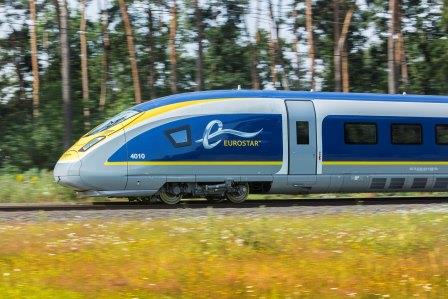Trains versus planes: How Eurostar almost halved airline demand
28 November, 2019
4 min read


A new train versus plane analysis by route expert OAG on the 25th anniversary of Eurostar raises questions about the future of the historic Paris-London route.
OAG’s Becca Rowland used Eurostar’s birthday to look at how the high-speed rail link has affected air travel between the two cities.
READ The AirlineRatings best airlines list for 2020.
SEE some crazy ideas that never made it onto aircraft
SEE our photo gallery of brave hostesses of the mid-20th century.
While she concludes there was still a market for airlines, she found that the number of seats had declined from 4.84 million in 1996 to 2.7 million in 2019 and warned further falls are likely.
For the same period, the number of flights declined from 36,608 annually, or 100 a day, to 16,755, or 46 per day.
The one area where there had been an increase was in average seats per aircraft — from 132 to 161 — as smaller jets and turboprops were replaced by bigger jets such as A318s, A319s and A320s.
Rowland noted the immediate reduction in air services when Eurostar started operating was relatively small but there had been a decline over the years.
“After an initial reduction in capacity, the number of airline operations stabilized and it was nearly 10 years before there seems to have been a more significant shift away from air,'' she said.
“The reduction in scheduled aviation capacity which occurred in the mid-2000s appears to have coincided with the start of the new Eurostar service from St Pancras International Station in London, and away from London Waterloo.”
What the change to St Pancras meant was a reduction in scheduled travel times from three hours to a reliable two hours and 16 minutes.
Ironically, the time taken to fly increased from 65 minutes to 85 minutes with less than half of flights now arriving within 75 minutes.
One saving grace for airlines appears to have been the growth of low-cost carriers with lower fares.
"Arguably, without the competitive fares of the low cost carriers the market may have declined more than it has,'' Rowland said.
There is some good news for airlines in that improving load factors saw 96,000 passengers fly between London and Paris in September 2019, to record the fourth-highest volume of traffic since 2010.
Rowland also observed that about a third of passengers are taking connecting flights and that this is less convenient for rail passengers likely forced to change stations.
But a grim prognosis for the route suggests continued decline due to congested skies and rising environmental concerns.
“Congested skies above Southern England and Northern France are likely to stay that way and airlines will be tempted to continue to pad the schedules to maintain reliability making the flight time closer to the 2 hours 16-minute train ride,’’ she said.
“The downside of this action in the light of consistent Eurostar travel times will be to increase the competitive disadvantage of air travel. Factor in congested airport terminals and lengthy security queues at peak time and the tipping point may be closer than it appears.”
Then there are the changes in consumer behavior and the increasing worries about climate change.
“With a well-known high-speed rail option available for this relatively short route – just 350km - it would not be a surprise to many in the industry if this route sees some passengers make a deliberate choice to let the train take the strain as they consider the carbon footprint of their travel choices,’’ Rowland said.
Given the network of high-speed trains across Europe, London-Paris will not be the only route where congestion and flight shaming are making airlines nervous.
Next Article
3 min read
Virgin gets nod for Tiger deal

Get the latest news and updates straight to your inbox
No spam, no hassle, no fuss, just airline news direct to you.
By joining our newsletter, you agree to our Privacy Policy
Find us on social media
Comments
No comments yet, be the first to write one.
